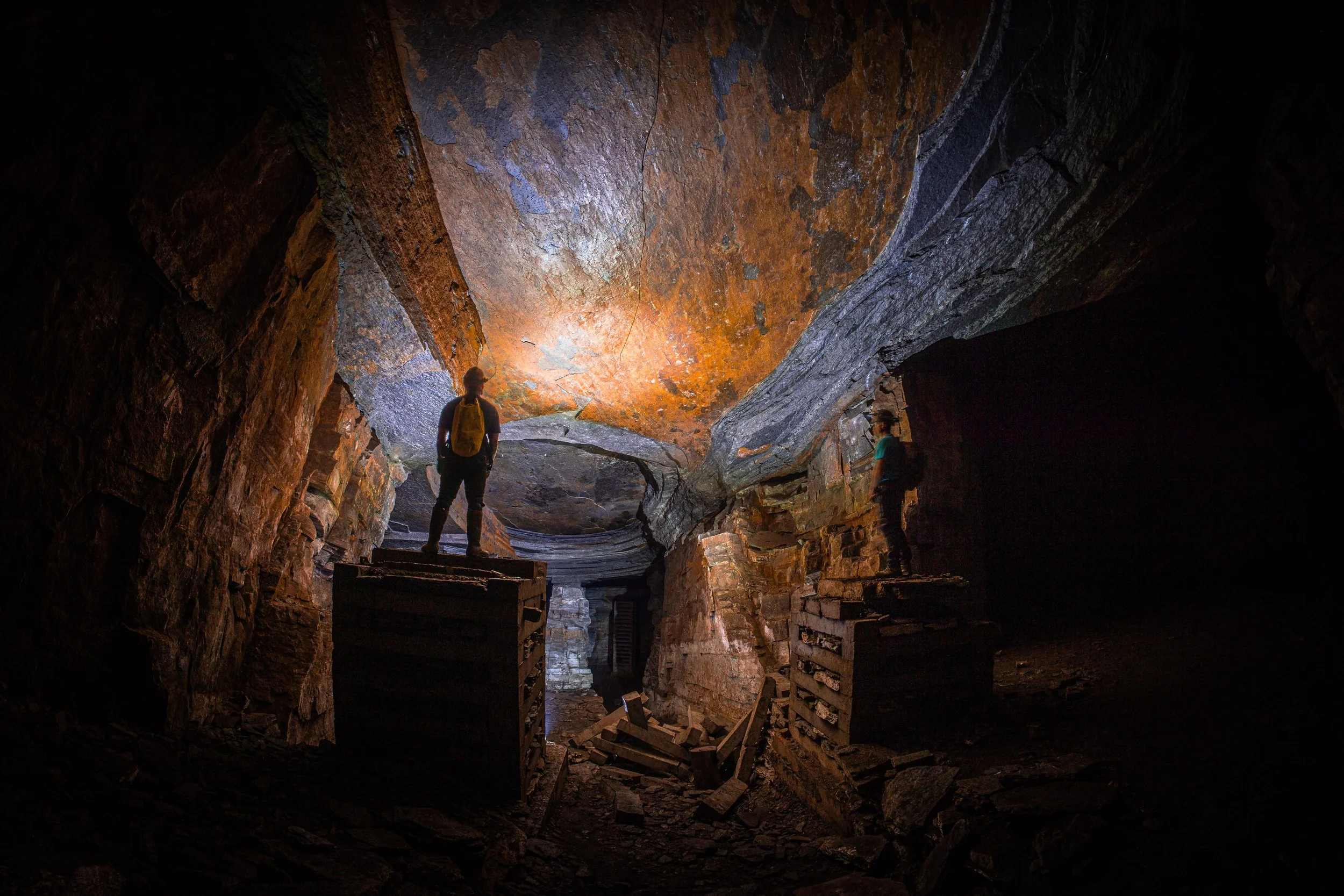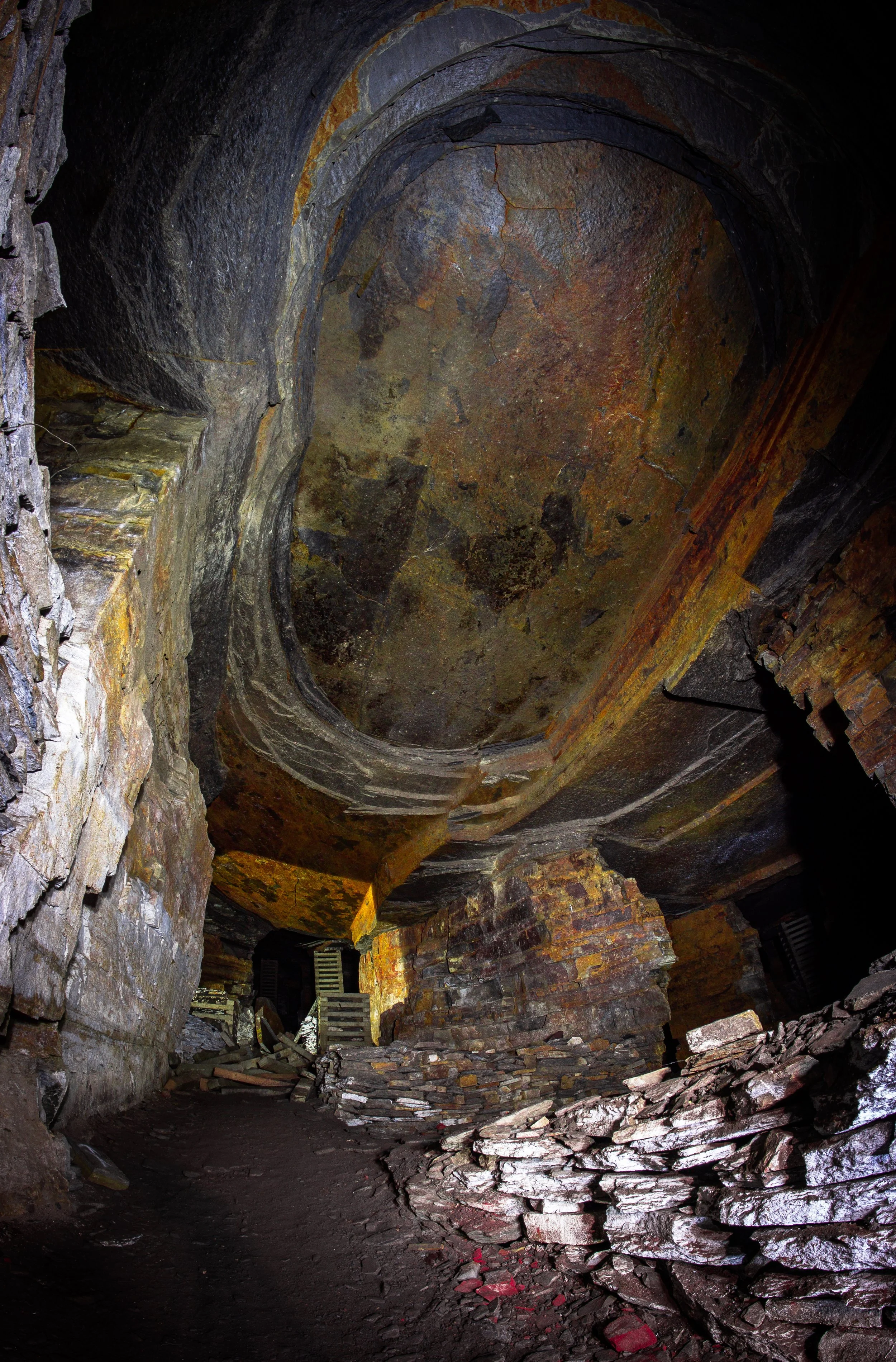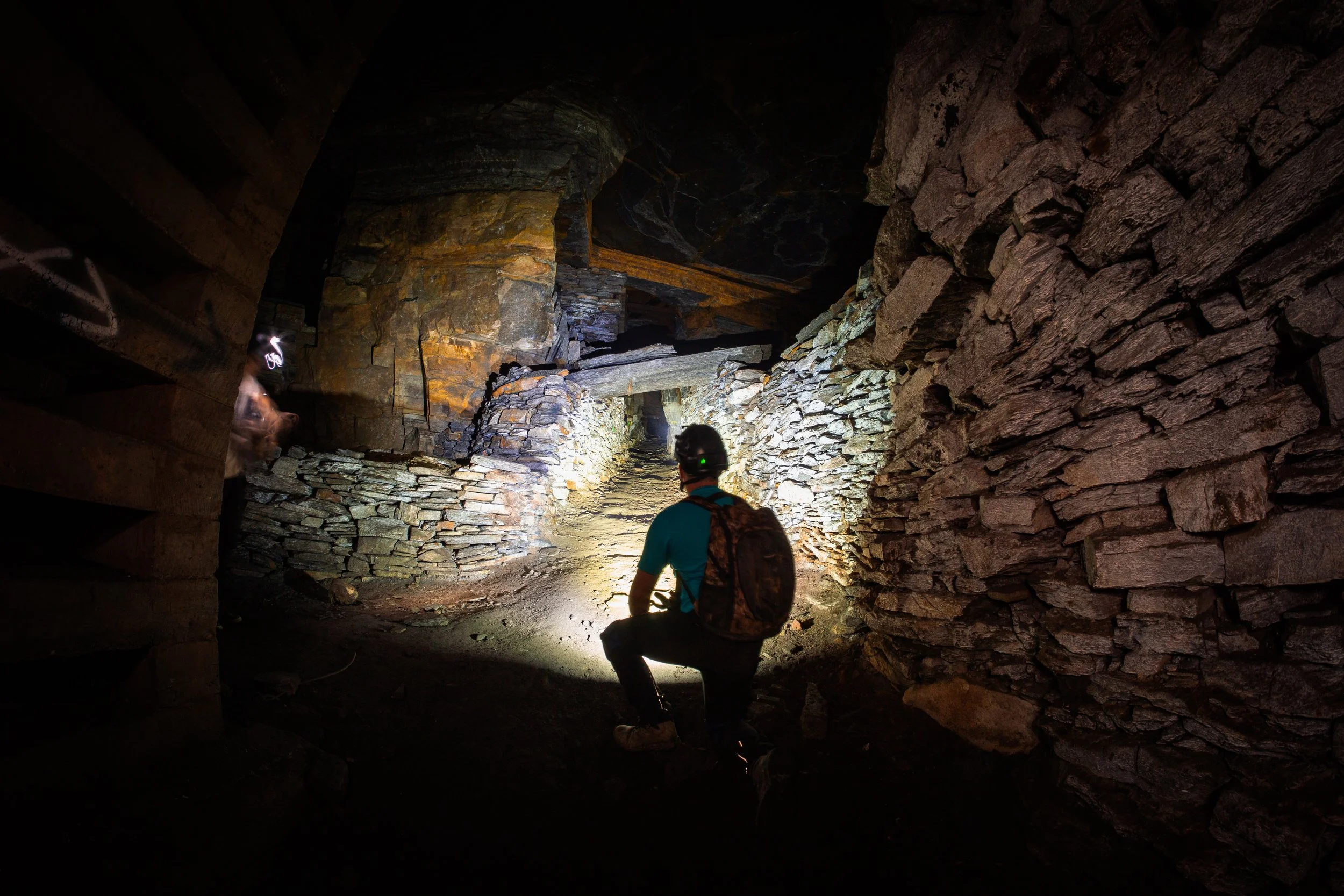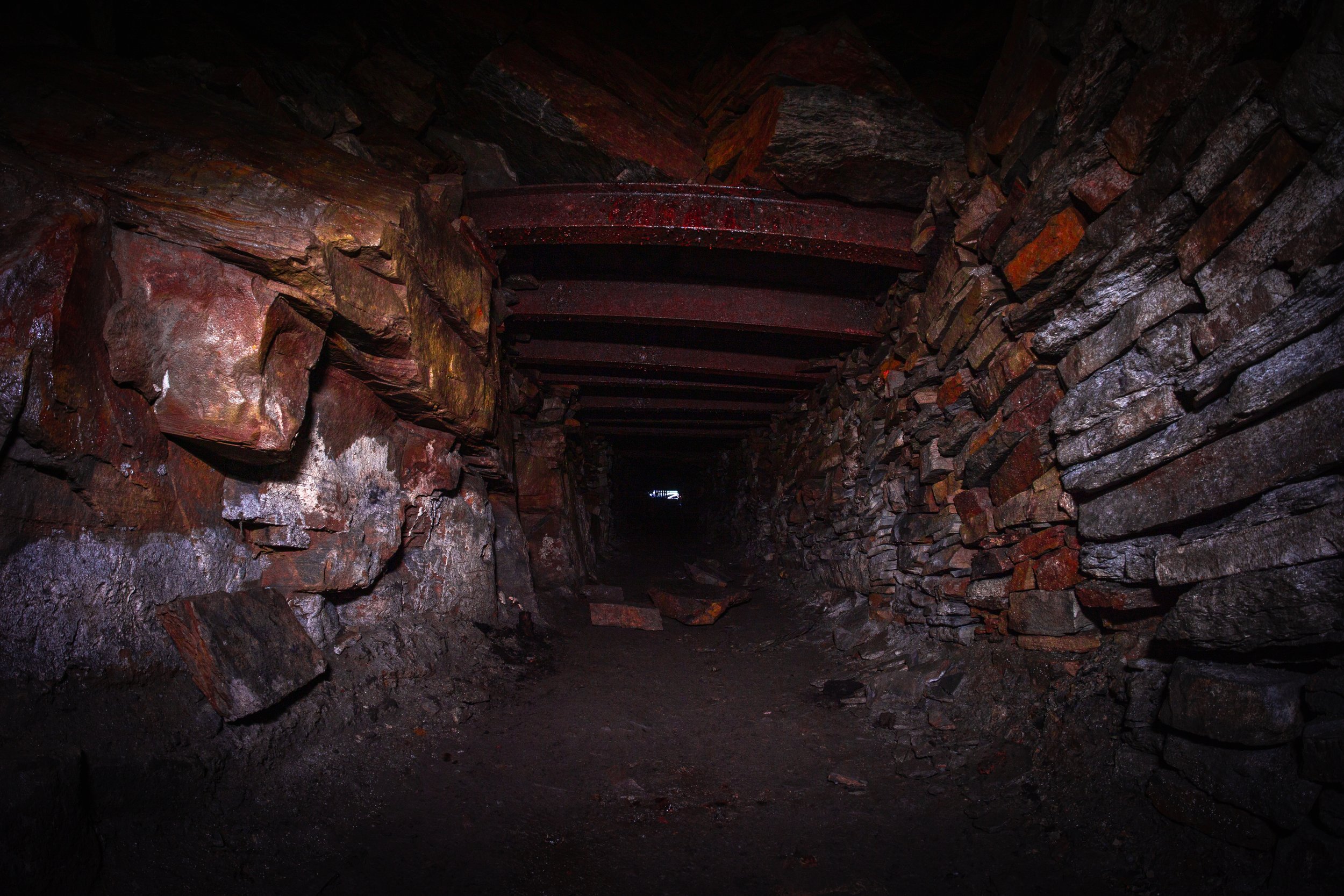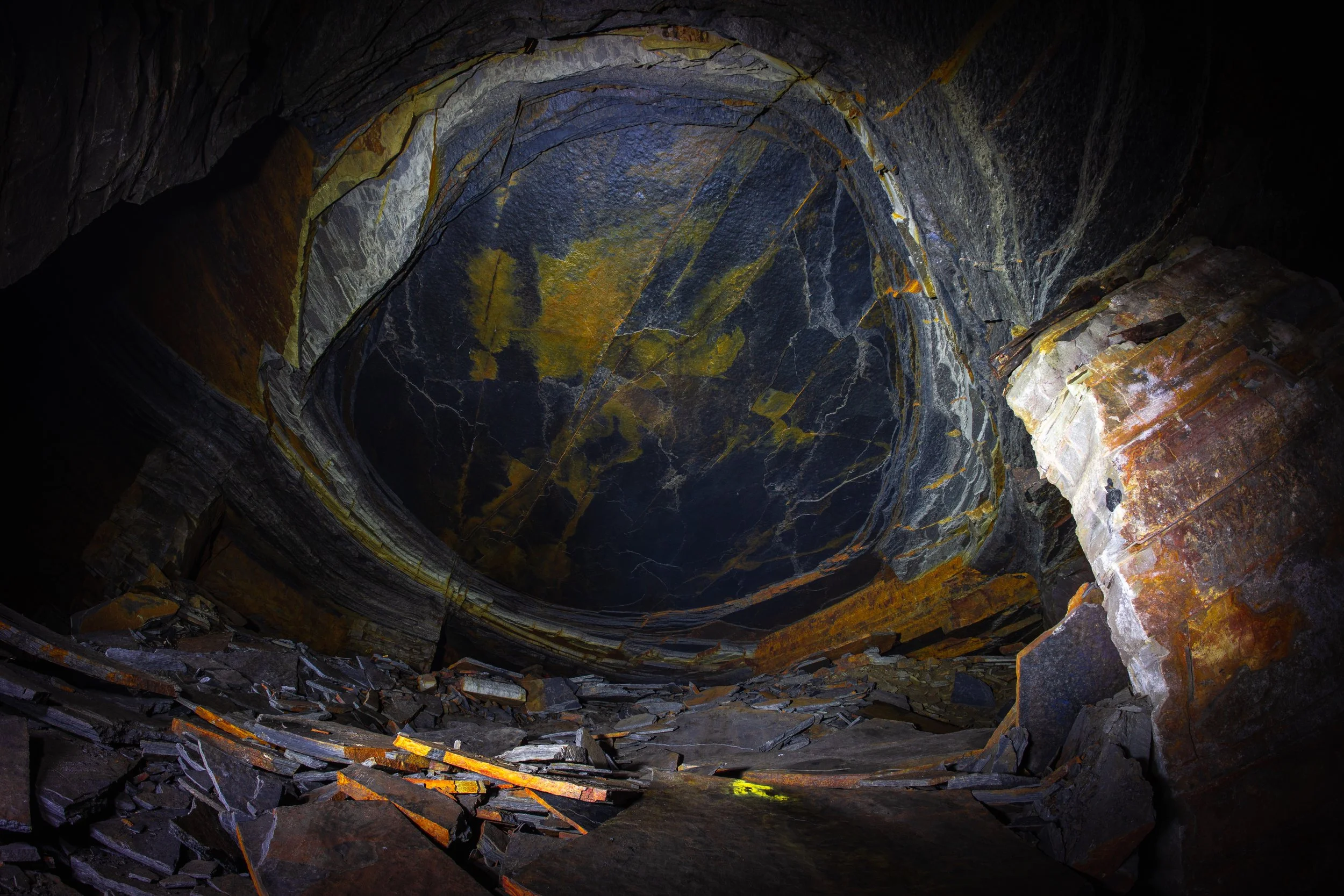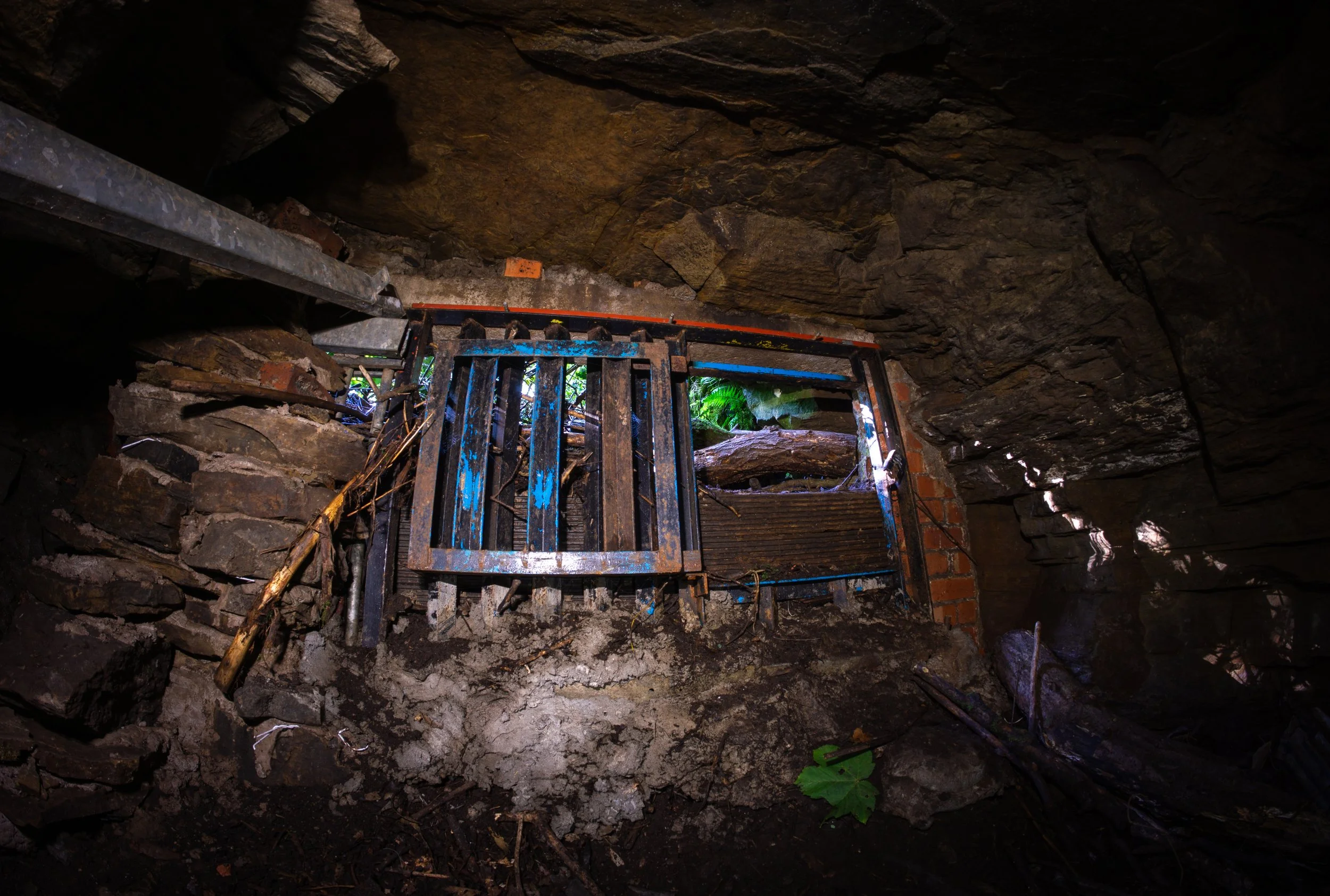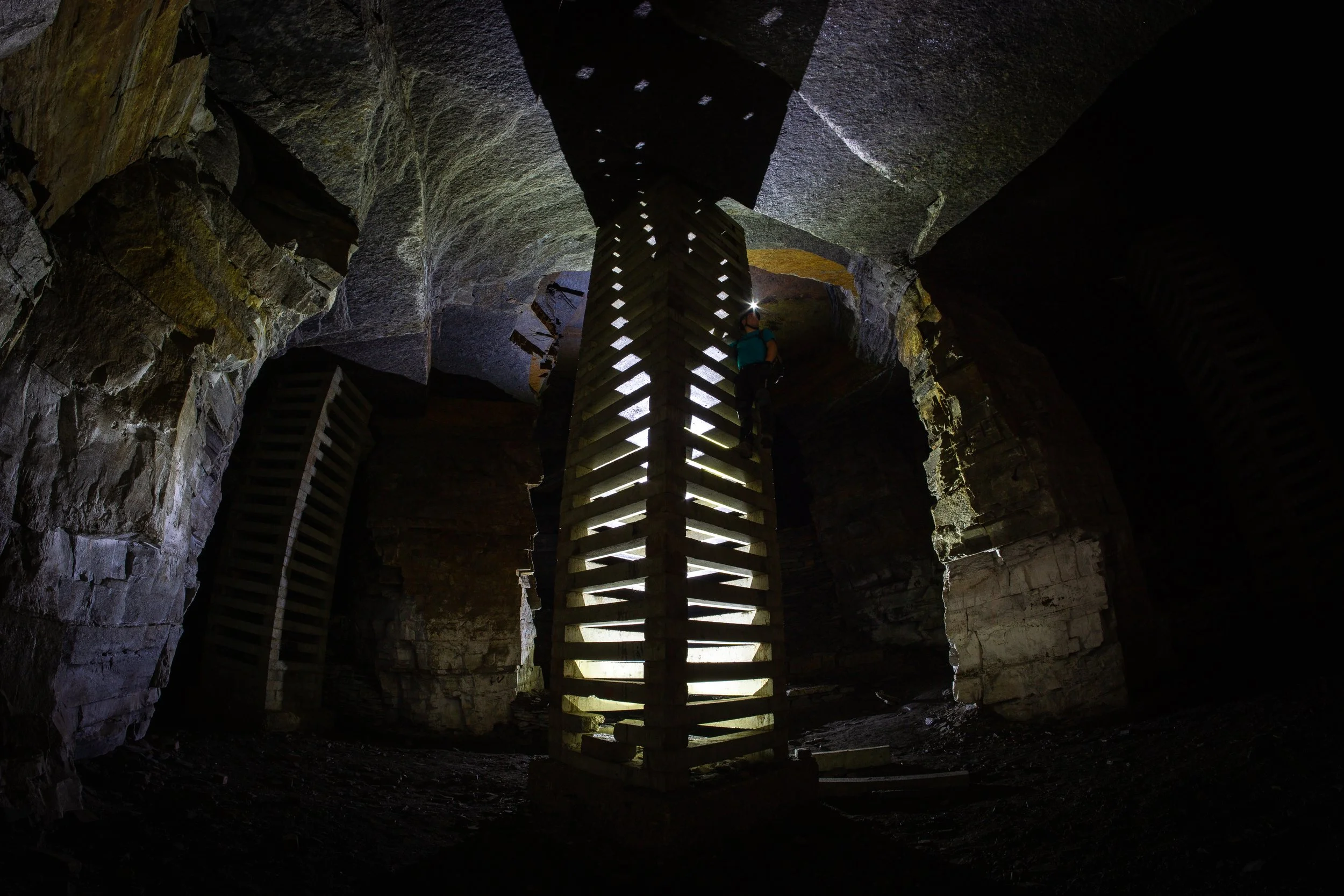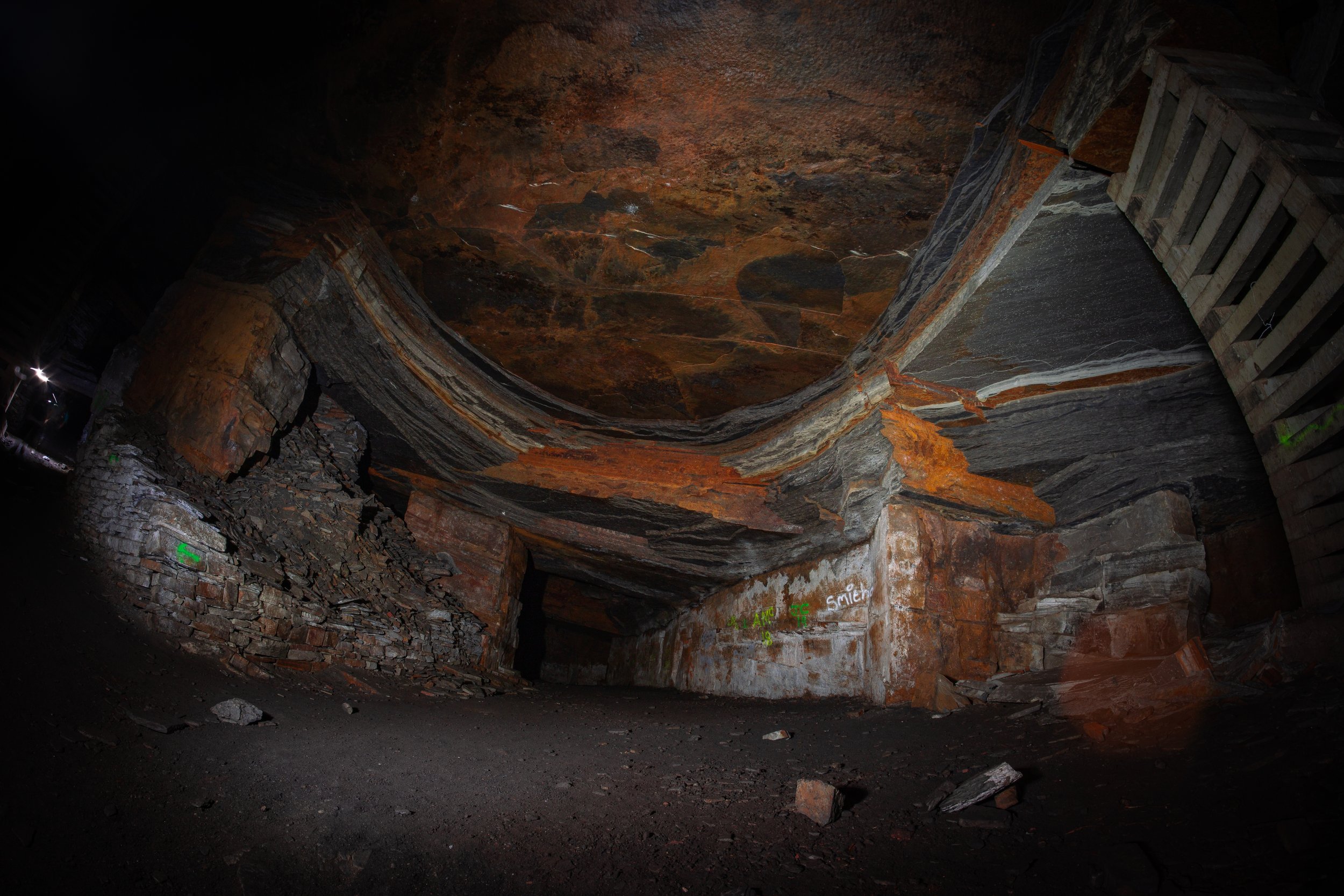Crisp Delph Dragons Eye Mine - Lancashire
There’s a photo that circulates online, shared all over the world, taken by a friend of mine, Antonio, another UK mine explorer. I’d argue it's probably the most viral and widely viewed photo when it comes to UK mine exploration. Taken around 15 years ago, it’s still being seen by millions today, often shared by overly dramatic American media outlets claiming it resembles the eye of a sleeping giant or dragon.
I first came across the image when I was just starting to explore underground spaces. I was completely awe-struck, not just by the photo itself, but by the idea that something like this existed underground in the UK, less than an hour from my own doorstep. At the time, visiting it felt like a distant dream, but as I became more experienced in underground exploration, I decided it was time to make a real effort to get inside.
After doing some research, I found the rough location and scouted it out during a dog walk. I’ve found dog walking to be a great cover for rural trespassing as i can always blame the dog for "running off." By then, the location had started to gain serious attention online, which added pressure to visit before it inevitably got sealed.
A few days later, I returned with a couple of others (minus the dog) and headed for the entrance. The small quarry is practically in the landowner’s back garden, so stealth was key. However, it seemed that in the few days since my last visit, the owner had buried the small adit under a large mound of rubble. We started digging to see how deep it was, but only a few minutes in, a group of chavs appeared, closely followed by the stink of weed and loud voices and decided to hang around, making the situation hopeless.
Sure enough, a few minutes later, the landowner turned up and demanded we leave which we did. The chav group followed, but not without hurling a load of unnecessary abuse and threats his way. Honestly, it’s no surprise places like this get sealed off if this is the kind of nonsense the bloke has to deal with regularly.
All hope wasn’t lost, though. About a year later, I heard rumours that a local caving club was trying to negotiate access with the landowner, which resulted in no access being given in the end. I’d have happily joined a club visit at that point, but instead decided to go check on the place myself, just in case any physical progress had been made.
It was a hot August afternoon. After visiting the nearby St. Joseph’s Seminary one last time before its unfortunate demolition, we made our way back across the rural fields toward the quarry. To our surprise the adit was wide open. The local caving club must have been busy, though it was a shame access hadn’t been officially granted.
We crept quietly down toward the adit, trying to make as little noise as possible, eager to get inside and out of sight quickly. Over the years, I’d heard a few horror stories about this place, one of them being that the landowner had once lit a massive bonfire right by the entrance in full knowledge that folk were inside, drawing out the oxygen and filling the chambers with smoke.
As we entered the first thing we noticed was a pile of broken asbestos tiles just inside the door, yet another extreme attempt to deter entry. I never understood why he didn’t just drop a massive boulder over the entrance. That method has sealed off a few Derbyshire mines effectively, and would require serious machinery or explosives to bypass, neither of which you’re likely to use unnoticed in someone’s back garden.
Carefully avoiding the scattered hazards, we finally began to explore the system. From what I’d read, the workings here were once much larger and likely connected to other nearby stone mines. This is backed up by an old report on an urbex forum where the landowner’s son recalled exploring the network as a child, when the connections were still passable. These days, however, collapses have significantly reduced the size of the accessible mine.
There’s much more to see here than just the famous “eye.” The whole mine was surprisingly photogenic, with plenty to offer. Some of the cribbing used during its time as a munitions store is still intact, and massive piles of dead’s stacked up to three storeys high line the chambers.
When we finally reached the eye, we noticed how the original photo’s fisheye lens had exaggerated its shape, making it look more perfectly spherical than it actually is. That said, it was no less impressive in person. The myth of a giant’s eye sleeping underground, waiting to awaken and unleash havoc, is just that, a myth. The “eye” is simply the result of natural delamination in the stone ceiling, which by chance formed this surreal, iconic shape.
History
“Crisp Delph Mine, also known as the Dragon’s Eye Mine, is a disused sandstone mine near Skelmersdale in Lancashire, dating back to the early 19th century. Part of a wider network of flagstone quarries and underground workings in the area, the mine originally employed 13 workers above ground and 6 underground, extracting sandstone used for a nearby seminary. A tramroad once connected the mine eastward along Farley Road to Roby Mill, operating until around 1860. The mine itself closed in the early 20th century, later repurposed by nearby explosives manufacturer ICI Roburite as an ammunition storage site. It was during this time that the distinctive ash-covered floors and Jenga-like roof supports were added. The nickname “Dragon’s Eye” comes from a unique natural formation in the ceiling, where layers of stone have gradually detached, leaving behind a dark, spherical feature that resembles an eye, a striking and mysterious sight that continues to draw explorers today”.


